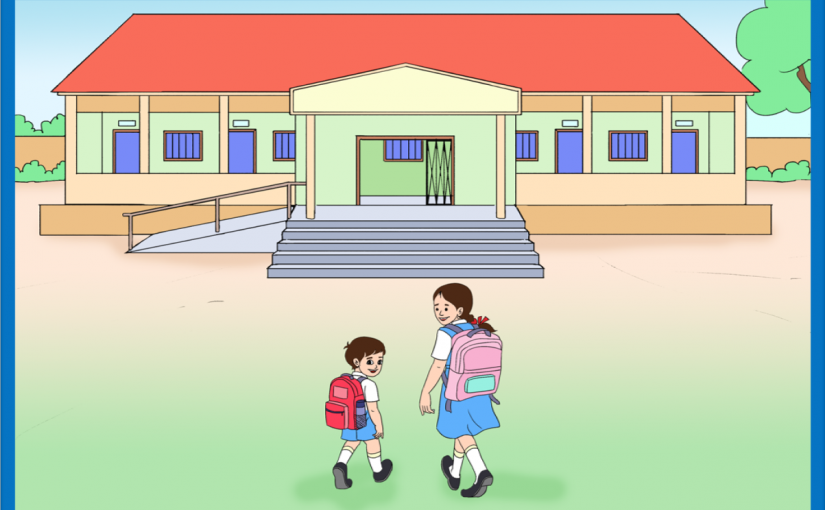By Rajan Narayan
WE are not surprised that the number of Marathi-medium primary schools has come down to less than 600 from around 1,000 a decade ago. The actual number is much lower as many of the 600 schools are single-teacher schools with an enrollment of less than ten students. Parents are only interested in English-medium primary schools.
Fortunately for parents, the late chief minister of Goa, Manohar Parrikar, officially restored grants to English- medium Diocesan primary schools. The church schools literally blackmailed the Digambar Kamat and his successor Manohar Parrikar government to restore grants. The Diocesan schools reverted to English-medium at the beginning of 2000. They got grants officially restored to the Diocesan English-medium primary school when the late Manohar Parrikar became chief minister in 2002. This is the deal that Manohar Parrikar had to strike to get Catholic support in the 2002 election.
PRIVATE SCHOOLS
HOWEVER, grants were not extended to English-medium primary schools run by private managements like the People’s High School and Mustifund Primary School. It was Goa’s first chief minister, Bhausaheb Dayanand Bandodkar, who started hundreds of Marathi medium schools after the Maharashtrawadi Gomantak Party (MGP) came to power in the first election. Till then there were no primary schools in any language other than in Portuguese. It was not in the interests of the Portuguese colonial regime to encourage even Marathi-medium schools.
The few Marathi-medium schools before Liberation were run by Goan bhatkar or landlords for their children and the children of mundkar, their tenants. However, after Liberation in 1961, Chief Minister Dayanand Badodkar opened many primary schools in Marathi as Marathi was the most widely used language in the first decade after Liberation.
KONKANI SCRIPT A PROBLEM
KONKANI with its scripting problems did not find favor. Konkani is written in both Devanagiri and Romi scripts in Goa. When Shashikala Kakodkar was the education minister in the PDF cabinet she suspended grants to English- medium schools to with a view to saving the Marathi-medium schools which were n the decline. She limited grants to vernacular medium-schools.
The diocesan schools were forced to switch to Devanagari Konkani script- medium. This was a big setback as neither the school managements nor the teachers were familiar with Devanagiri Konkani. The actual teaching continued in English. There was a sharp drop in enrolment in the Diocesan schools over the 90s decades.
This forced the church to strike a deal with Manohar Parrikar to restore grants to English-medium schools run by the church institutions. This led to a steep rise in enrolment in the Diocesan schools. Proportionately the number of students registered in Marathi and Konkani-medium schools witnessed a sharp drop.
Even the new generation of Marathiwadis were not interested in Marathi primary schools. In the interest of the students, even the Marathi manoos started enrolling children in English-medium schools. Marathi was never the language of Goa. It was only because the Portuguese suppressed Konkani that Marathi flourished. Marathi became the language of religion and culture during Portuguese rule. It was only because the MGP captured power in the first election that Marathi-medium schools were set up. They were welcomed because the backward classes had no opportunities for education during the Portuguese colonial regime.
So then the number of Marathi- medium primary schools rose to almost 2,000 in the first 20 years post-Goa’s Liberation. Thereafter it dropped regularly till it declined to under 400 post-Covid pandemic and lock-downs.
KONKANI SUFFERS
TRAGICALLY, there are no takers for Konkani-medium primary schools either. There are less than 50 Konkani- medium primary schools in Goa. In any case, the emphasis on Goa’s regional language is a joke. The compulsion or incentive to start and sustain Marathi- primary schools is only till the 4th standard.
At the 5th standard even Marathi and Konkani-medium schools switch to the English medium. There are virtually no Marathi and Konkani medium secondary and higher secondary schools. Goa is probably the only state where there are primary schools in Hindu, Urdu and Kannada besides Marathi and Konkani.
The last decade has witnessed the growth of many elite schools. Like the Zee schools which charge huge amounts of fees. With growing prosperity and the re-location of people from all over India in Goa the demand for these schools has gone up. Parents don’t mind that they are expensive. Parents are obsessed with giving children the best education.
Most governments in the country have switched to English-medium at the primary level. All states however insist that the local language Konkani should be compulsory. In Karnataka where I studied the local language was compulsory even up to the secondary level. In neighboring Maharashtra Karnataka grants are extended to English-medium schools. The Telangana government has decided that English and Telugu will be given equal importance.
The ground reality is that English is still the language of the government and the courts in the country. All higher education including engineering and medicine are in English. The Indian Institute of Technology and the Indian Institute of Management offer education only in English. The Central government has not succeeded in enforcing Hindi as the national language of the country.
As far as Goa is concerned the government should extend grants to all English-medium primary schools.
